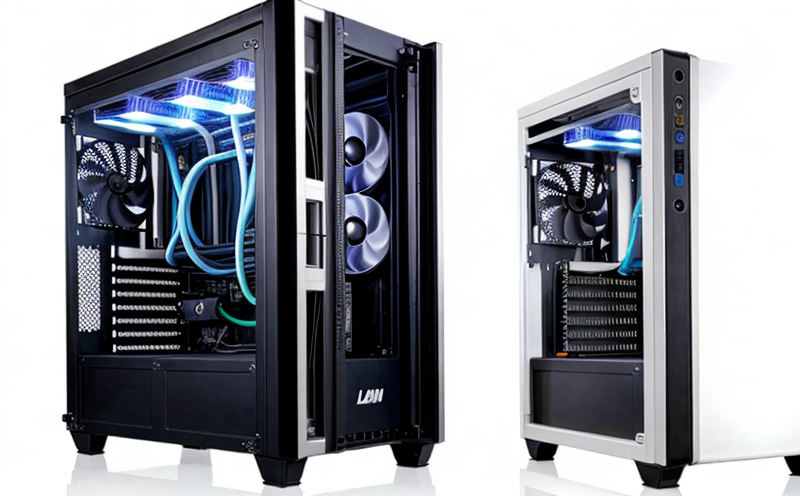EN 13779-2 Airflow & Output Testing
The European Standard EN 13779-2 specifies methods for determining the airflow and output of HVAC (Heating, Ventilation, and Air Conditioning) equipment. This standard is crucial in ensuring that HVAC systems operate within specified performance parameters, which directly impacts energy efficiency, comfort levels, and overall system reliability.
Understanding the importance of this testing involves recognizing how airflow and output are interrelated with the design specifications of HVAC units. The primary goal of such tests is to ensure that the equipment meets both the manufacturer's claims and regulatory requirements. This process helps in identifying any discrepancies between the actual performance and the expected values, which can lead to improved system efficiency.
The testing procedure typically involves setting up the unit under controlled conditions, measuring the airflow through various components such as the air intake, filter, evaporator coil, condenser coil, and exhaust. The output is then measured based on parameters like temperature drop across the evaporator and pressure rise across the system. These measurements are critical for verifying that the equipment operates within specified limits.
One of the key aspects of this testing is its role in validating the thermal comfort levels provided by HVAC systems. By ensuring accurate airflow and output, we can guarantee that the space being conditioned meets the desired temperature and humidity conditions. This not only enhances occupant satisfaction but also contributes to lower operational costs over time.
Another critical factor is the impact on energy efficiency ratings (EER). Proper airflow and output ensure that the system operates at peak efficiency, thereby reducing electricity consumption and lowering carbon footprints associated with HVAC operations. For businesses and organizations committed to sustainability goals, this testing becomes an essential component of their compliance strategy.
Furthermore, consistent adherence to EN 13779-2 helps in maintaining warranty terms and conditions by providing verifiable proof that the equipment has been installed and operated correctly according to manufacturer guidelines. This is particularly important for complex systems where multiple variables can affect performance over time.
The testing process also involves regular calibration of instruments used during the assessment, ensuring precision and accuracy throughout all measurements. Proper training and experience are required for personnel conducting these tests to interpret results accurately and make informed decisions regarding any necessary adjustments or replacements.
In summary, EN 13779-2 Airflow & Output Testing plays a vital role in maintaining the integrity of HVAC systems by providing objective data on performance. This ensures that facilities maintain optimal operating conditions while minimizing environmental impacts through efficient operation.
Industry Applications
- Commercial buildings: Ensuring compliance with local regulations and optimizing energy consumption.
- Hospitals & healthcare facilities: Guaranteeing patient comfort and safety by maintaining precise temperature control.
- Data centers: Protecting sensitive equipment from overheating while ensuring consistent performance levels.
Why It Matters
The significance of EN 13779-2 Airflow & Output Testing extends beyond mere compliance; it significantly impacts the operational efficiency and longevity of HVAC systems. By rigorously testing airflow and output, we can identify potential issues early on, preventing costly repairs or replacements down the line.
For quality managers and compliance officers, ensuring that their facilities adhere to these standards is a key responsibility. It demonstrates commitment to maintaining high standards of service delivery and reliability, which are crucial for building trust with clients and stakeholders.
R&D engineers benefit greatly from this testing as it allows them to refine designs based on real-world performance data, leading to innovations that enhance overall system efficiency and user experience.
From a broader perspective, these tests contribute positively towards reducing energy waste and promoting sustainable practices within the industry. As more emphasis is placed on environmental responsibility, accurate airflow and output testing becomes indispensable for achieving these goals effectively.
Eurolab Advantages
At Eurolab, we pride ourselves in delivering comprehensive HVAC equipment testing services that go beyond compliance. Our team of experienced professionals ensures meticulous adherence to EN 13779-2 guidelines while leveraging cutting-edge technology and methodologies.
We offer a range of value-added services designed specifically for our clients' needs, including detailed reports highlighting areas where improvements can be made along with actionable recommendations. This approach not only helps in maintaining current equipment but also aids in planning future upgrades or expansions based on actual performance data.
Our commitment to quality is reflected in the stringent calibration processes we follow for all our instruments used during testing, ensuring that every measurement is accurate and reliable. Additionally, we provide comprehensive training programs aimed at equipping personnel with the necessary skills to perform their tasks proficiently.





